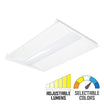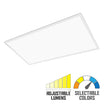Light timers have revolutionized the way we manage our home lighting systems. This article delves into everything you need to know about light timers, from their types to their installation and troubleshooting.
Introduction to Light Timers
Light timers are devices designed to control the illumination of your lights automatically at specified times. This technology brings numerous advantages, from energy conservation to enhanced home security. With an integrated clock, light timers can be programmed to turn lights on or off according to individual needs.
Types of Light Timers
Light timers come in two main types: mechanical and digital.
Mechanical Light Timers: These timers are typically square or rectangular, featuring a numbered dial on the front. Manipulating this dial allows you to set the times for your lights to switch on or off.
Digital Light Timers: Digital timers offer more flexibility than their mechanical counterparts. They allow you to program more than one schedule for the same light, making them ideal for varying lighting needs throughout the day.
Benefits of Light Timers
Light timers offer several benefits:
- Energy Saving: Light timers can significantly reduce energy consumption by ensuring lights are only on when needed.
- Security: Light timers can create the illusion of an occupied house even when you're away, deterring potential intruders.
- Convenience: With light timers, you don't have to worry about forgetting to switch your lights off before you leave your house or go to bed.
- Creating Ambiance: Light timers can help create a specific mood in your home by controlling the timing and level of light.
Choosing the Right Light Timer
When choosing a light timer, consider the following factors:
- Wattage Rating: All switches have wattage ratings. Add up the wattage of the light bulbs the switch will control, and ensure the switch is rated to handle that total.
- Lighting Configuration: Most switches will work with standard single-pole switch setups. However, not all will work as three-way or four-way switches, where lights are controlled from multiple locations.
- Types of Lights or Devices: If you’ll be controlling fluorescent lights, LEDs, or low-voltage lights, you’ll need a special switch that can handle these types.
Installation of Light Timers
Installation of light timers depends on the type of device.
For Plug-in Devices: These devices are easy to install. Simply plug them into your existing outlets and lamps.
For Hardwired Devices: These devices are more permanent and reliable but may require some electrical skills and tools. In such cases, always follow the manufacturer's instructions and safety precautions.
Programming Your Light Timer
Programming your light timer depends on the type of timer.
For Mechanical Timers: These timers have a dial that you wind to turn on a fixture. Depending on where you twist the dial, you can set the light to stay on anywhere from one to 60 minutes.
For Digital Timers: These timers have digital controls that you can set with displays, remotes, or apps. They are more advanced and versatile, offering you a range of flexibility for your lighting needs.
Working with LED Lights and Light Timers
LED lights are compatible with light timers. However, the correct installation procedures must be followed to prevent issues such as flickering or continuous lighting. It's also advisable to use digital timers to power LED lights, as they tend to work better with the inductive characteristics of these lights.
Light Timer Troubleshooting
If you encounter problems with your light timer, follow these troubleshooting steps:
- Reset the Timer: If your timer isn't functioning correctly, try resetting it. This will often solve any minor issues.
- Check the Power Source: Ensure that the timer is securely plugged into a power outlet, and that the outlet is functioning correctly.
- Inspect the Wiring: If the timer is hardwired, verify that all wires are correctly and securely connected.
Alternatives to Light Timers
Light timers are a great way to control your home lighting, but there are alternative devices that you can consider:
- Dimmers: These devices adjust the brightness of your lights by changing the voltage or current. Dimmers are useful for saving energy, reducing glare, or creating a cozy atmosphere.
- Motion Sensors: These devices turn your lights on when they detect movement. They are ideal for outdoor lighting, especially for security purposes.


















































Leave a comment
All comments are moderated before being published.
This site is protected by hCaptcha and the hCaptcha Privacy Policy and Terms of Service apply.